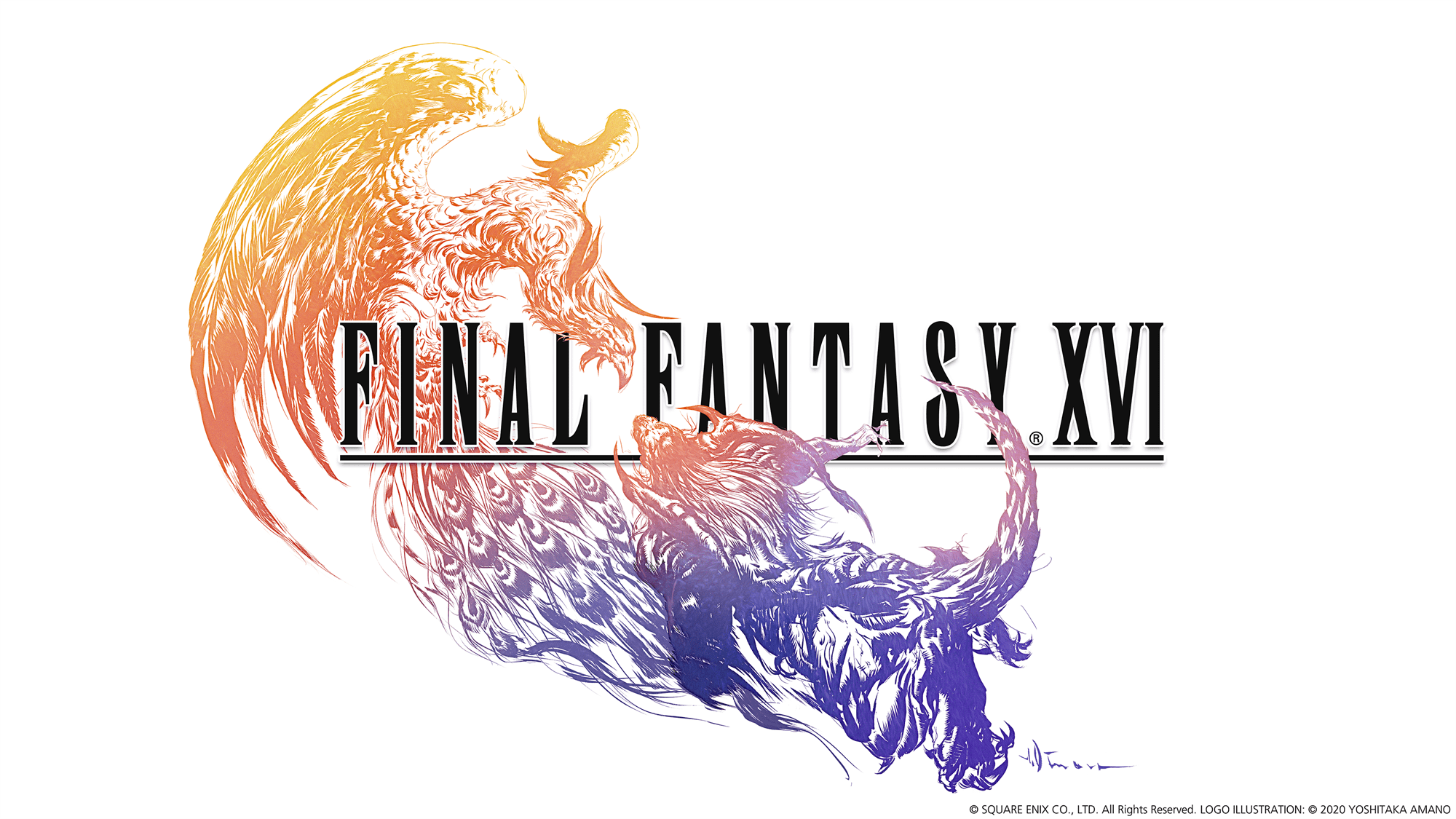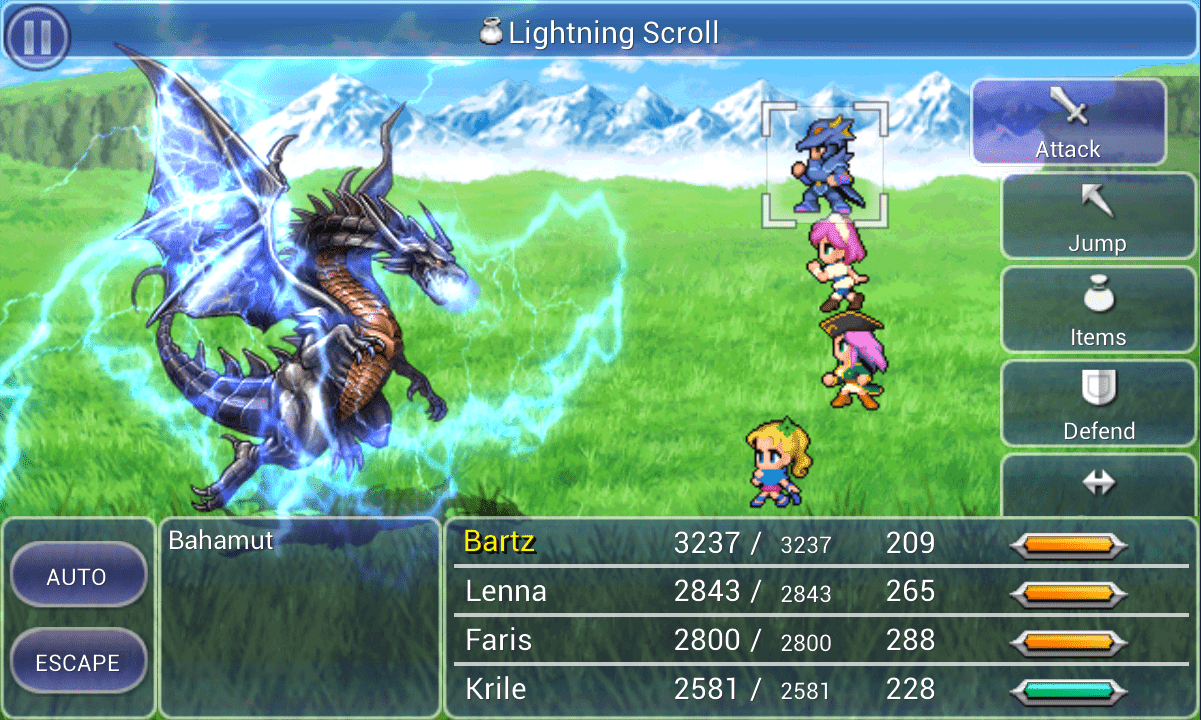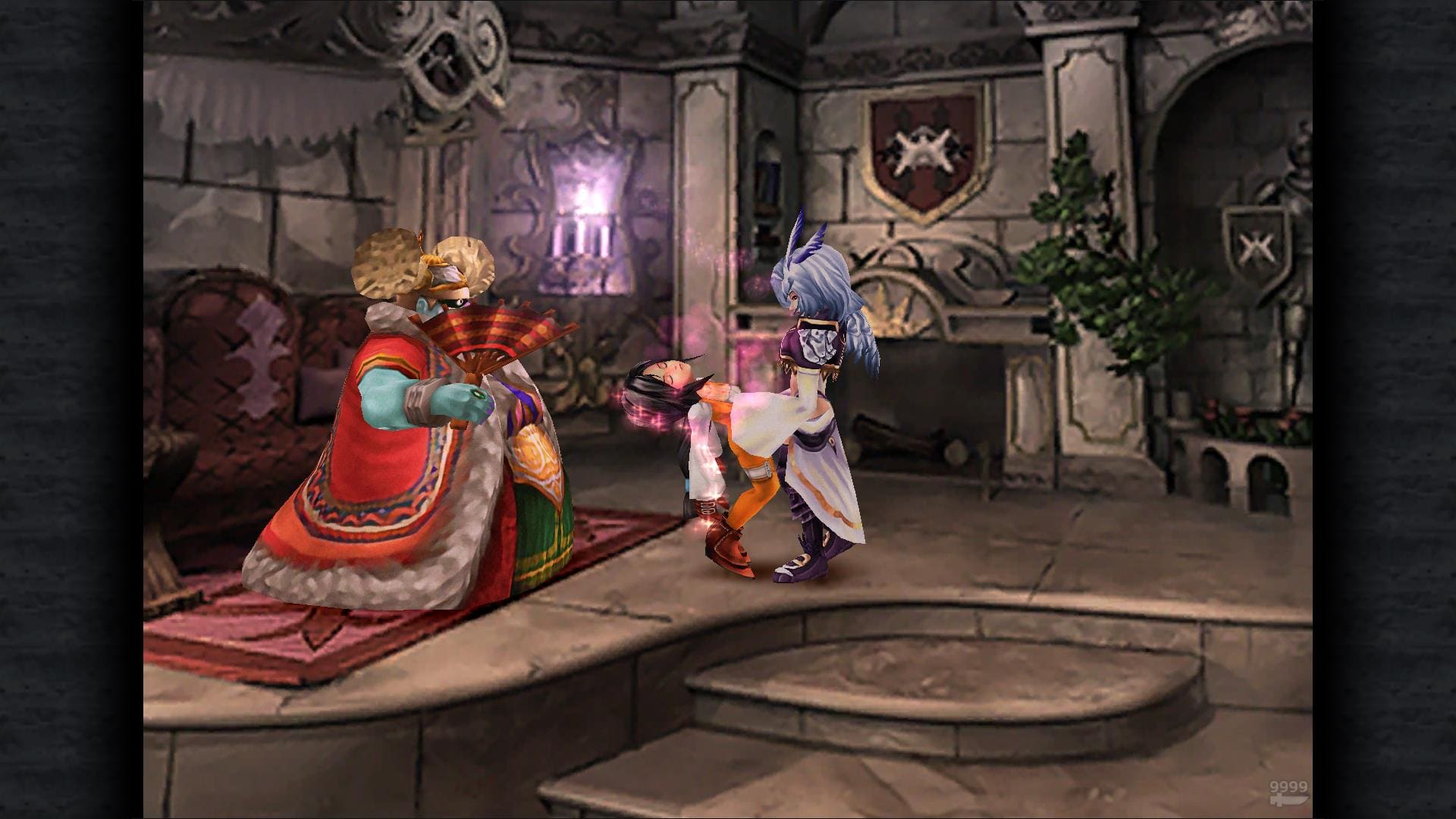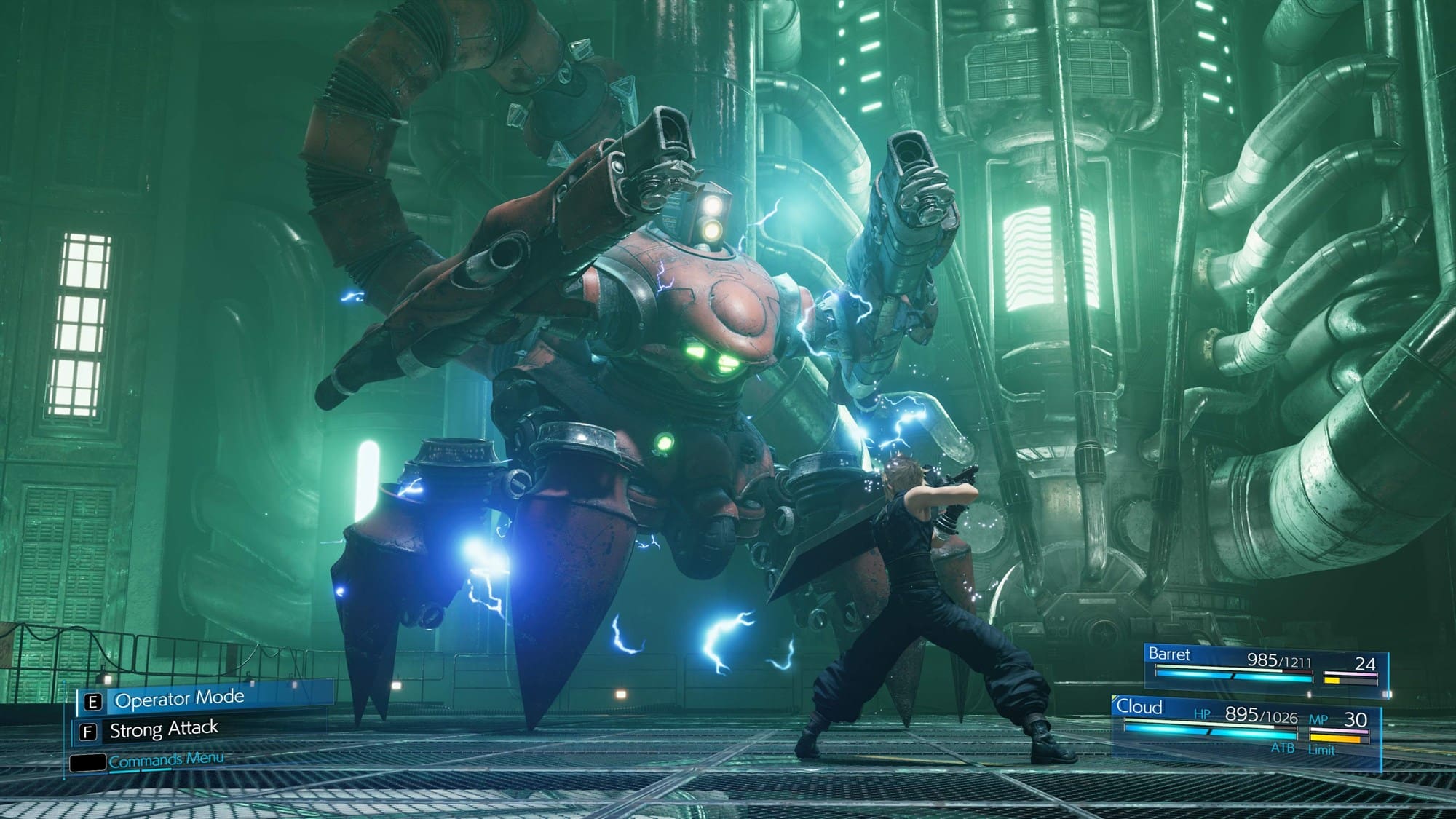
When looking through some of gaming’s biggest franchise evolutions, Square Enix’s Final Fantasy might have the most intriguing as it’s a truly unique franchise. With Final Fantasy being an anthology, the series has taken fans into different worlds and stories with each game filled with rich lore, deep JRPG gameplay, and memorable heroes and villains. From its humble beginnings as an original NES title back in 1987 (1990 for North America), the series continually heightened its quality and evolved in its world-building, storytelling, and gameplay with each entry that followed to become one of the biggest franchises in gaming. Now, amid its 35th anniversary, there’s no better time to look back at Final Fantasy’s evolution and delve into the growth it’s had as a franchise.
Through 15 mainline games, Final Fantasy has gone through three pivotal eras that defined its reputation as a top JRPG and although the first five games are generally not as talked about; they embodied an early era of the franchise that established core aspects that would evolve throughout the series. Final Fantasy’s turn-based battle menu combat system was incredibly new for the time, even predating iconic RPGs like Pokémon. With it, players would be able to choose between a variety of physical and magic attacks or use an item as they fought against an array of powerful creatures and bosses. Players would also be able to vary their combat based on character classes they would choose at the beginning of the game.

While the early Final Fantasy games would seem like standard JRPGs today combat-wise, things would quickly change with Final Fantasy III and IV. With Final Fantasy III, players were no longer locked into classes from the start of the game thanks to the “Job System” that was introduced where players could change their class throughout the game. This allowed way more customization for battle and would become an iconic staple for many entries that followed. Summoning characters, which were also introduced in this entry, also changed the scope of battles. Players could acquire summons through story progression or optional battles, and they would greatly aid players in battle through cinematic actions. Many summoning characters would return throughout the entire series with characters like Ifrit, Shiva, Titan, and Bahamut being some of the most well-known.
Final Fantasy IV offered a big change to turn-based combat as it introduced the Active-Time Battle (ATB) System which offered more real-time combat. With the ATB system, players would be able to input commands in a time-based manner causing a deeper sense of urgency in combat and having players need to act before enemies could. It added deeper layers of strategy to the combat and showed Final Fantasy as a great innovator of RPG gameplay. Final Fantasy IV also was the first entry that featured a main protagonist rather than just a group of characters with Cecil Harvey as he went on a personal journey and found party members along the way, which would become the norm going forward. Final Fantasy V would improve on many gameplay innovations expanding the jobs system and adding in more customization options for players to take advantage of.
There’s no doubt that the early era of Final Fantasy delivered some innovative and influential RPG gameplay that greatly impacted the franchise and genre for years to come, but its story and graphical look reflect more of humble beginnings. In terms of looks, Final Fantasy basically embodied the 2-D pixelated RPG worlds of the time but boasted fresher colors with each new entry and richer character designs. In retrospect, these early designs are super nostalgic and given the depth of each area that players could explore from a top-down perspective, there were always a lot of great secrets and rewards to find. It’s also worth noting that the early Final Fantasy games introduced some notable characters that would be seen throughout the franchise.
Final Fantasy II actually introduced two pivotal entities that fans have come to expect with every Final Fantasy game that followed: Cid and Chocobos. Chocobos are a bird species in the game that players could often use for faster travel across maps by riding them. While Cid is a human character who appears in various forms throughout the Final Fantasy series and can be a party member, background character, and was even a main antagonist in Final Fantasy Type-0. Final Fantasy III introduced Moogles, a species of small and super adorable creatures that appear throughout the series and have roles in generally running shops and have even been available as party members.

The early era of Final Fantasy’s stories also represented the series simply establishing its signature story trappings. Although each world and story presented was different between each game, the stories would generally see a group of characters banding together on a journey to stop an evil force from controlling ancient power within the world. While Final Fantasy IV’s story is often seen as a standout entry in the franchise for its centralized character-driven narrative, not many of the early Final Fantasy stories tended to stick out likely because the era that followed featured some of the best stories in the entire franchise.
The golden era of Final Fantasy was undoubtedly the sixth through tenth games as they’re among the most beloved of the entire franchise. While innovative gameplay was a major pillar of the franchise’s early era, combat stayed the same for most of the golden era with only a few notable tweaks. While the battle menu combat and ATB system stayed the same for every entry up until Final Fantasy X, summon access was changed in Final Fantasy VI as players needed to equip characters with a certain item called a magicite in order to summon that specific creature. There was also a new attack mechanic called Desperation Attack introduced in the same game where players could unleash a powerful attack when their health got low. The Desperation Attack would actually stick with the series for some later entries but go by different names like Limit Break (Final Fantasy VII), Trances (Final Fantasy IX), and Overdrive (Final Fantasy X).
Summoning and Limit Breaks also received some interesting tweaks in Final Fantasy VIII with the game’s newly introduced Junction System, which allowed more customization for characters in terms of upgrading weapons and armor, allowing summons to do more than one attack, and enhancing magic. The biggest gameplay change within the golden era was undoubtedly in Final Fantasy X when the ATB system was traded out for the Conditional Turn-Based (CTB) Battle System that made combat less intensive.
Rather than players being on the clock during battle, players would instead strategize around seeing the order of attacks that could change if certain physical or magic attacks were used. It wasn’t exactly a popular change since it doesn’t really appear in any Final Fantasy games that followed, but it did create a unique battle system for the entry. Final Fantasy X also introduced the Sphere Grid systems that replaced standard experience-point upgrades allowing for players to expand characters out of their initial class, meaning that they could turn a white-mage character like Yuna into a physical threat.
This era also saw some popular mini-games that allowed a good break from the RPG gameplay and were often a lot of fun. Final Fantasy VII included a mini-game called Fort Condor that allowed players to defend a fortress in a similar vein to Tower Defense games. Final Fantasy VIII featured a strategy card game called Triple Triad and Final Fantasy IX also featured a card game called Tetra Master that offered some relief during the main story. Final Fantasy X featured easily the most famous Final Fantasy mini-game though with Blitzball, which was an underwater sports game that saw players try to outscore the other team in physical team-based combat mixing together elements of handball and soccer.
Combat certainly went through its changes during the golden era of Final Fantasy, but nothing went through more impactful changes during this time than the visual look and story of Final Fantasy games. While Final Fantasy VI kept the same aesthetic as past Final Fantasy games, the series’ shift to PlayStation consoles offered higher quality graphics and character designs. Final Fantasy VII became the first game in the series to use 3D character models and CGI backgrounds creating more visual depth to the worlds and characters. With games that followed, they would only become more visually stunning in the cutscenes they featured with the opening cutscenes of Final Fantasy VIII and Final Fantasy IX being particularly epic. Even the best parts of Final Fantasy X are elevated because of strong fantasy visuals and a more compelling atmosphere.

Story and characters are easily what make the golden era golden though as it features some of the most beloved and memorable characters and story moments that fans still talk about to this day. Truthfully, the entire cast of Final Fantasy VII, most notably protagonist Cloud Strife and antagonist Sephiroth, are regarded among some of the most iconic characters of all-time with Cloud and Sephiroth even being picked to represent the franchise in Super Smash Bros. Ultimate. Other characters of this era like Final Fantasy VIII protagonist Squall Leonhart, Final Fantasy X’s dual-protagonists Tidus and Yuna, and Final Fantasy IX protagonist Zidane Tribal are also regarded among some of most-beloved characters of the series. When people often envision Final Fantasy characters, these are the characters that people often think of first because they defined what this series was.
The stories further defined the series as they provided these richly detailed worlds and surprisingly emotional moments that captured the attention and heart of everyone that played these games. Final Fantasy VII offered so much expansive lore and history in its world that it’s been continually expanded upon in spinoff games and animated films. Final Fantasy VI was the first to bring fans into a steampunk environment rather than the traditional medieval fantasy worlds, which the franchise would become known for. Players felt constantly invested in the rivalries established between characters and especially against the evil forces attempting to destroy the world. The personal stories of the protagonists generally carried great emotion and offered some great twists and revelations. Most of all, the romantic storylines were absolutely incredible as Cloud and Aerith’s tragic romance in Final Fantasy VII contains one of the most gut-wrenching turns of all time and Tidus and Yuna’s romance in Final Fantasy X ranks among the most heartfelt and tear-jerking in all of gaming.
The golden era of Final Fantasy took the franchise to new heights offering some of the most highly regarded stories, characters, and worlds to date. It was so beloved that games like Final Fantasy VI, VII, and X often are seen in conversations and rankings of the best games of all time. With the franchise being on such a high, the only real place the franchise could go is a “low,” but it wasn’t really that bad. Post-Final Fantasy X, the franchise didn’t dip so bad that it became completely maligned, but Square definitely went through an experimental era with the series that saw them introduce new kinds and gameplay and restructure what Final Fantasy was.
Perhaps the biggest change in Final Fantasy’s experimental era was with Final Fantasy XI and XIV as they were MMORPGs that brought the aesthetic and mechanics into a massive new genre. With Final Fantasy XI, the series offered the first form of cross-play between PS2 and PC and was the Xbox 360’s first MMORPG. As an MMORPG, Final Fantasy XI allowed players to move in combat and play alongside friends in quest, both firsts for the series. While some of its RPG mechanics didn’t necessarily always transition smoothly into its new MMORPG structure and its new paid monthly subscription didn’t exactly win everyone over, Final Fantasy XI was a big success in the franchise exploring new avenues and Square found success again with Final Fantasy XIV, but not at first.
When Final Fantasy XIV first released in 2010 it was such a commercial failure and regarded as a mess that Square was forced to shut down the game and work on it for a couple years to address the many concerns. Finally in 2013, Square released a new version of Final Fantasy XIV that’s absolutely taken the world by storm and even become one of the most profitable and successful Final Fantasy games of all time. With the restructure, Final Fantasy XIV has been able to support exhilarating and dynamic party combat that’s seen players take on great threats in an expansive world full of rich lore. Currently, Final Fantasy XIV has released four major expansion packs that have kept the strong player community coming back for more and has felt like a great evolution of Final Fantasy XI.
Now, Final Fantasy’s shift into the MMORPG landscape didn’t mean that it left its RPG roots behind. Final Fantasy XII actually changed the battle system mechanics quite a bit from previous entries, including the “gambit” system that offered reaction commands for characters within certain instances of battle. It was really Final Fantasy XIII that offered the most distinctive changes, generally mixing old mechanics with new ones. Rather than the previous Job System, Final Fantasy XIII introduced Paradigms where players could command party members since control of them was stripped away and they could create team formations that would change their roles. Admittedly, this made things a little complicated in battle as characters were locked in roles until players chose to shift formation and it required more pre-battle strategy since you couldn’t adjust things during combat. Also, the ATB system returned to add more timing and urgency to battle and was mixed with Final Fantasy XI’s ability to move during fights so players could actively dodge incoming attacks.

The biggest entry that differentiated itself from the traditional Final Fantasy formula was Final Fantasy XV as it completely traded out the turn-based structure for more real-time combat and an open world environment. No longer were players stuck waiting to attack or forced into a linear narrative as Final Fantasy XV brought the franchise into the more action-packed and expansive world of modern RPGs. Now players could interact and attack in battle directly and a lot of the leveling and progression was built around exploring the vast and vividly detailed world. With tons of side-quests and interesting locations and dungeons to explore, the game’s story of a prince named Noctis going on a bachelor party trip with his friends has so much to offer and hits some surprisingly emotional points. Even for all the changes that occurred with Final Fantasy XV, it felt like a return to that golden era of Final Fantasy, and it seems like it’s going to be a big influence going forward.
Currently, Final Fantasy is going through a tremendous resurgence that simply can’t be matched. After the success of the 2020 Final Fantasy VII: Remake, Square announced that fans should not only expect a remake of the beloved prequel Final Fantasy VII: Crisis Core later this winter, but also two follow-up entries in the Remake series soon. The remakes have fully embraced what Final Fantasy XV achieved and put a fresh coat of paint onto the franchise’s most beloved entry. Next year, fans are also gearing up to play the next entry in the mainline series, Final Fantasy XVI, that’s set within a classic medieval fantasy world and seems to have well-known summons play a prevalent role in its original story. It too looks to expand on what Final Fantasy XV delivered, but also looks to offer more prominent roles for summons, possibly including them being physically playable in battle, as well as visually stunning combat that’s backed by incredible music.
Final Fantasy has left an immense impact on the gaming world that’s made its evolution even more incredible to reminisce on. Along with its mainline series, there have been plenty of beloved spinoff series like Final Fantasy: Tactics, the Mana series, Dissidia: Final Fantasy, Kingdom Hearts, and so many more that have widened what’s possible for the series and strengthened its community. Even as the series continues to reinvent itself and forge a new path in evolving its formula, it remains one of the most historic, influential, and impactful gaming franchises of all time. Regardless of what directions Final Fantasy chooses to go from here on out, its future looks bright and its legacy of changing the gaming landscape continues.

